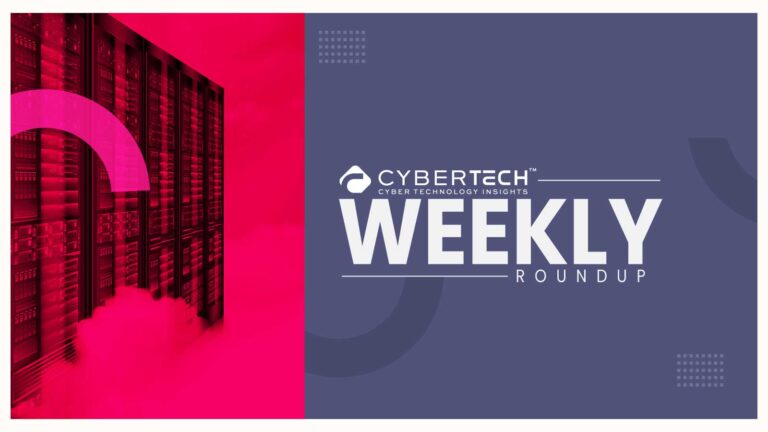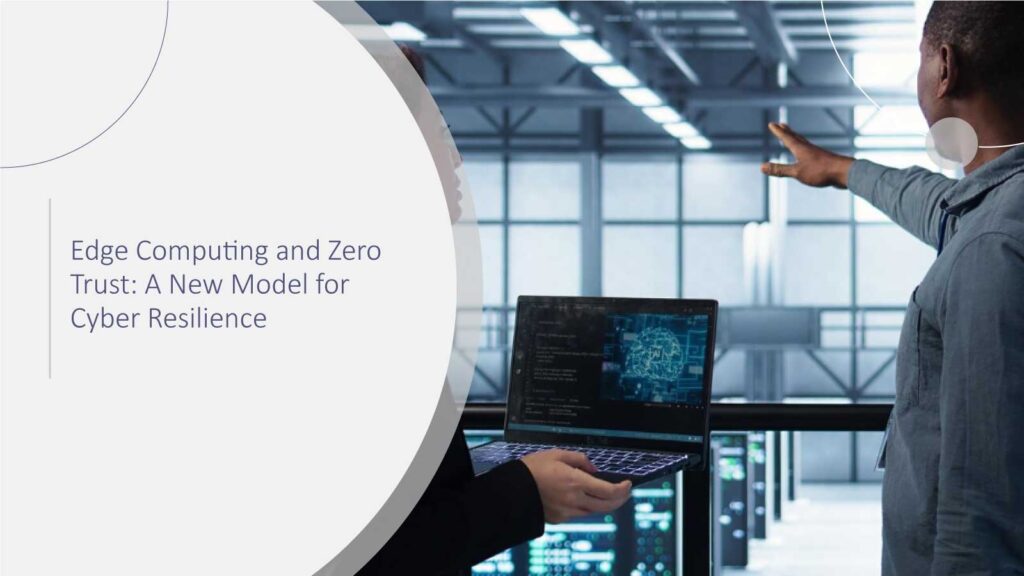Edge computing is changing the way we process data, shifting computing as close back to the data source as possible. Understandably, this shift increases the attack surface, as the more endpoints exposed to the outside world increases. Both the number and diversity of attack vectors are outside of traditional, centralized defense controls. According to Gartner, by 2025, nearly 75% of enterprise data will be created. And processed at the edge, a prime target for attackers. Traditional enterprise security models cannot keep up. As a result, we need new strategies to protect the now-distributed and agile environment of edge computing.
What Constitutes the ‘New Attack Surface’ in Edge Computing?
Edge computing significantly increases the number of devices and nodes that operate outside of traditional centralized data centers. Including IoT sensors, industrial controllers, mobile devices connected to 5G networks, AI systems, etc. Unlike traditional IT environments, many of these edge devices are remote and physically accessible to Individuals. These include people seeking to tamper with them, steal them, or even damage them. The environment in which they are deployed causes this to happen. Additionally, there are many devices and types of hardware, software, and connectivity protocols that all have their requirements. This creates security gaps that are easily exploitable by attackers.
Also, edge computing ecosystems often include resources from cloud, edge, and on-premise. It combines the three types of environments. Eventually, it creates a complex hybrid of environments that restricts visibility and control. ENISA’s (2022) and CISA’s (2022) reports support the assertion that the a fragmented landscape of diversity across these environments. Further, makes it challenging to include all endpoints within a single security policy and track and monitor any malicious activity. Attackers are taking advantage of this hybrid ecosystem by targeting the weakest points. These include unsecured Application Programming Interfaces (APIs), outdated firmware, or a lack of segmentation of the network.
Edge computing’s reliance on digital connectivity and infrastructure expands the attack surface. It will rely on the ability of security approaches to address the physical element of a cyber attack. Also, operational aspects, and the need for real-time detection and monitoring of threats across a plethora of different distributed nodes. Edge computing will also redefine the perimeter and scope of security. We require this to incorporate, at least, the devices, networks, and data flows across the increasingly expanding digital frontiers.
How Edge Computing Security Frameworks Are Evolving to Close These Gaps
As edge computing expands rapidly, security frameworks have had to evolve from outdated perimeter-based defenses to distributed, dynamic frameworks.
Adopting Zero Trust for Continuous Verification:
Zero Trust principles replace past perimeter-based defenses by implementing continual verification of every device and user. Even though No matter where they are located. The continual verification is critically important to edge environments. Because here devices operate beyond the traditional network perimeter.
Implementing Secure Access Service Edge (SASE):
SASE structures combine networking and security services in the cloud. These services allow organizations to apply consistent policies across a distributed edge node and user devices. Thus lowering risk from distributed nodes and access points.
Applying AI for Continuous Threat Monitoring:
AI-based monitoring tools analyze each device and network traffic to identify different device and user behaviors and anomalies, as well as actively automating defense against emerging threats. Security intelligence in edge environments is critical to keep up with the scale and speed of edge computing.
Evolving Device Identity and Attestation:
With the use of advanced cryptographic techniques and hardware authentication, we can verifiably ensure that devices are authenticated. This is important before they enter the network to prevent rogue or compromised device entry into the network. Otherwise, it can result in the widespread development of an attack and potentially result in critical fallout.
Technologies and Practices Closing the Edge Attack Surface
Enhanced Encryption for Distributed Data Protection
Edge environments require robust encryption schemes. Because of this, organizations encrypt data while it is at rest and also in transit across various networks that are often less secure. Modern implementations will use strong cryptographic schemes like AES-256 for local data storage and transport protocols, such as TLS 1.3 or newer. With these protocols, users accessing edge nodes can feel confident that their sensitive information is protected. Even if someone physically compromises an edge node or intercepts the communications.
Emerging technologies such as homomorphic encryption and secure multi-party computation also provide users the ability to process data in a way that they cannot expose the raw data. This is an important landmark for edge applications that exist in privacy-sensitive usage.
Micro-segmentation and Network Slicing to Reduce Exposure
Organizations use micro-segmentation to give better protection against attacks and reduce the blast radius. It is a method of slicing the network into many smaller, self-contained segments. This prevents the lateral movement of access. In other words, a compromised edge device should be incapable of moving freely and accessing other important systems. Network slicing provides a method of allocating virtualized, isolated network slices for specific applications or groups of users. Further, network slicing is pervasive in 5G deployments. This exposes great detail of control over traffic flows and limits exposure from certain data flows in complex edge architectures.
Automated Patch Management and Vulnerability Remediation
Consistent and timely updates are important for mitigating security holes that can be exposed to changing threats. Because edge devices are so distributed, manual patching will not typically be feasible. Automated over-the-air (OTA) update mechanisms, along with cryptographic validation, will allow fast and also secure patching to take place over possibly thousands of edge nodes. This reduces the exposure period for known vulnerabilities, and human error, a common attacker vector, is alleviated or removed altogether.
Decentralized Trust and Blockchain-Based Device Validation
Some organizations are experimenting with decentralized trust models, eventually featuring distributed ledger technologies, or even better. Blockchain technologies, to guarantee device identity and integrity. Using immutable device provenance and also state records, unattended hardware and software integrity attestation can be achieved. Such approaches will allow for the provable strengthening of trust in device identity, beyond reliance on existing certificate authorities or registries. Furthermore, this is a significant advancement for highly distributed edge ecosystems, where centralized trust anchors could only be reasonable options that form bottlenecks and points of failure at scale.
Real-World Example: Verizon’s 5G Edge Security Solution
Verizon, a major U.S. telecom operator, has been a pioneer in secure edge computing solutions. This week, Verizon continues to take a deliberate step in making, at a minimum, the highest standard of security controls pervasive in its 5G edge platform, through not only the usage of its 5G edge platform but also necessitating the use of security controls in any of its backend offerings. It unveiled zero-trust security models, real-time threat detection, and encrypted network slicing for its enterprise customers. In 2024, alongside its announcement of additional solutions to the 5G Edge platform.
This initiative is imperative as the newly competitive workloads being extended to the edge create a much larger attack surface, particularly in industries like manufacturing, health care, and distribution. In addition to the transformational benefits of network modernization, Verizon is utilizing its 5G edge platform to continuously monitor edge nodes in a non-homogeneous environment, with risk managed by Artificial intelligence while enabling strict device authentication with zero trust as a focal point.
This initiative is an example of how a large U.S. corporation is pushing a horizon of edge security flexibility by the intersection of network modernization with adaptive security frameworks that provide a tangible opportunity for enterprises to secure confidentiality, integrity, and availability of sensitive data, even at its point of generation.
Reference:
Verizon 5G Edge Security Enhancements – Verizon Business Newsroom, 2024
Future trends: closing the edge attack surface
Edge-native AI and federated detection
Edge computing is moving more anomaly detection and threat scoring onto devices themselves so attacks get flagged and stopped locally. Federated learning lets distributed nodes share model improvements without centralizing raw data, improving detection speed and privacy across heterogeneous deployments. (Amazon Web Services, Inc., MDPI)
Autonomous, self-healing networks
Networks are adopting AI to detect degradations or compromises, isolate affected slices, and automatically remediate issues at the edge. Early deployments and studies report substantial reductions in repair time and improved availability when automated remediation is applied. (FedTech Magazine, ResearchGate)
Hardware-rooted trust and TEEs
Trust anchors at the silicon level—trusted execution environments and secure boot—are becoming standard for sensitive edge workloads, providing isolated runtime and tamper resistance that make device attestation and confidential computation far more practical. (cactilab.github.io, MDPI)
Quantum-ready cryptography and key management.
Organizations are beginning PQC migration planning for edge assets with long lifecycles to prevent “harvest now, decrypt later” attacks. Federal standards published in 2024 give enterprises specific PQC algorithms to adopt as part of key-management roadmaps. (NIST Computer Security Resource Center)
What this means in practice.
Together, distributed AI, automated remediation, hardware trust, and PQC reduce exploitable gaps across device, network, and cryptographic layers. shrinking the attack surface while preserving latency and privacy advantages that drive edge adoption. (Amazon Web Services, Inc., FedTech Magazine)
Conclusion
Edge computing is no longer a future concept—it’s a present-day necessity in cybersecurity. By processing data closer to its source, organizations can improve speed, reduce exposure to threats, and strengthen overall resilience. As IoT adoption grows and cyberattacks become more sophisticated, edge-enabled security frameworks will be vital for real-time threat detection and compliance. Businesses that integrate robust edge strategies now will not only protect their critical infrastructure but also gain a competitive edge in efficiency and customer trust. The future belongs to security architectures that think and act at the edge.
FAQs
1. How does edge computing reduce the risk surface in distributed environments?
By processing and securing data at local nodes, edge computing minimizes the amount of sensitive data in transit and limits exposure to centralized network vulnerabilities.
2. Can zero trust be applied effectively to edge architectures?
Yes—Zero Trust enables continuous validation of devices and connections at the edge, preventing unauthorized access even in fragmented or remote deployments.
3. What role does AI play in reducing edge-based threats?
AI running directly on edge devices can detect anomalies in real time, enabling immediate response and reducing reliance on slower, centralized detection.
4. How do hardware trust anchors improve edge security?
Features like trusted execution environments and secure boot ensure only authentic, verified code runs on edge devices, protecting against root-level compromises.
5. What is “harvest now, decrypt later,” and how can organizations defend against it?
It refers to collecting encrypted data now to decrypt later with quantum computing. Defending against it requires early migration to quantum-resistant cryptographic algorithms for long-lived edge systems.






